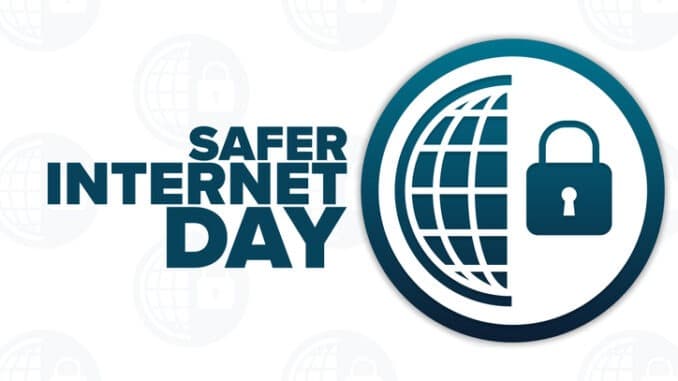
Gary Henderson on Safer Internet Day and school online safety in general
Gary Henderson, ANME (Association of Network Managers in Education) ambassador and director of IT, is very positive about Safer Internet Day and the need to flag up online safety, including cyber security. However, he wonders whether the existence of such a day may suggest the wrong approach…
February 8th this year was Safer Internet Day – an opportunity for schools and colleges to flag the importance of appropriate and safe online behaviours with students, parents, staff and the wider school community.
The challenge is that we all increasingly using technology and the internet in our everyday lives. This might involve asking Alexa for the weather before we go out the door, watching Netflix, browsing social media, or accessing school or work IT systems. For most of us, it is increasingly difficult to avoid using the internet and online services at some point in each day – yet ‘Safer Internet Day’ comes around but once a year…
The compliance trap
And this is where schools sometimes fall into the ‘compliance trap’. ‘We covered online safety with all students during Safer Internet Day’ – box ticked.
Although such events are good for evidencing compliance, and that students, parents, etc. have had online safety discussed with them during the academic year, if the aim is to make students, parents and staff safer online, is a one-shot, single-day, event, sufficient?
For me, the answer is ‘No’; a single event, or a single approach, can never be enough. We need multiple events, multiple approaches and, where possible, to embed the discussion on online safety and cyber security into all we do, including all classroom teaching. Now, that’s not to say that Safer Internet Day isn’t useful – it has its place – but as part of a broader approach to online safety.
A broader approach
Online safety needs to be part of our general way of thinking and working. It needs to be embedded, and so requires a multi-modal approach. Yes, this might include the once-a-year online safety event promoted by Safer Internet Day, but it should also be referenced in other contects as appropriate to the news and events of the time, or the main topic being discussed. Online safety should be integrated into lessons including, but not limited to, computer science lessons, such that it is discussed as the opportunities arise.
This might involve discussing GPS tracking data, and privacy, as part of a geography lesson, or thinking about how humans can be influenced by social media in a psychology lesson, or exploring the use of fake news and social media propaganda in a history lesson. There are plenty of opportunities for online safety to be discussed across different curriculum subjects.
We need to vary the delivery methods to include assemblies, class discussions, video content for students to view in their own time, written content and audio-based podcast content and we should allow students the time to carry out their own research into online safety and to share their own thoughts and concerns; they should be integral to the discussions.
A safe mindset
Crucially, the dangers online need to be acknowledged as constantly changing. At the moment I think the main risks relate to access to inappropriate content, online bullying and cyber security; however, these may not be the issues students will be faced with in five or six years’ time as some of our current Year 7s progress out of school/college and into work or university studies.
So, we need to also acknowledge that the specific practices we advise now may not be as useful when students progress beyond school. With this in mind, rather than prescribing what students should do to remain safe online, we need to increasingly consider how they should think in order to develop a safe mindset – how they should question and how they should problem-solve in trying to remain safe. They need to come at the world with an online safety and cyber-resilient mindset, rather than a checklist of dos and don’ts.
The challenge
The big challenge in all of this, in my view, continues to be the busy curriculum which seems to afford little time for regular discussions of online safety and cyber security; something which would have value for students in their future lives, sadly, comes a distant second or third to the curriculum content which will get the students those all-important exam grades that define their progression to the next stage of their education.
I am doubtful if this will change any time soon; however, I acknowledge that many schools are trying their best to support and encourage students to be safe online, while balancing the importance of time spent focused on curriculum content.
Final thoughts
Safer Internet Day certainly has its place, and is a useful marker in the calendar to highlight the importance of online safety; however, it is but one part of a much more complex puzzle, and it is this larger puzzle that I believe needs a greater focus and more time allotted to it.
Technology and the internet are here to stay and, as we have seen, they are likely to only increase in the many ways they pervade our everyday lives. In education, schools, colleges and universities we have an increasing need to provide learning opportunities that focus on online safety and cyber resilience.
We have an obligation to prepare our students to be safe online and in using technology, both in terms of the technology that is here today and in preparation for the technologies yet to come.


Be the first to comment